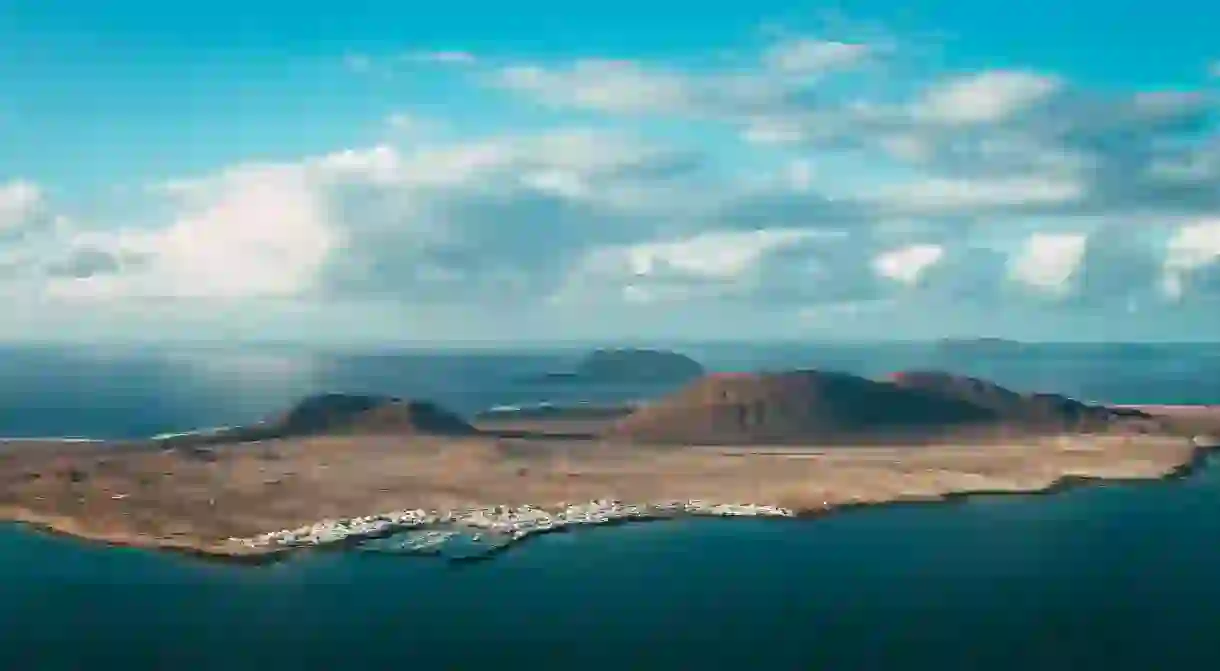The 13 Most Beautiful Beaches on Lanzarote

Lanzarote, like its Canary Islands neighbours Tenerife and Fuerteventura, owes its dramatic looks to a violent birth among huge volcanic eruptions. Unlike the others in this Spanish cluster off the coast of Africa, it only has a few black sand beaches. Much more common are fine golden sands that contrast dramatically with the ubiquitous lava rock. Here’s our pick of the most beautiful beach getaways in Lanzarote.
Playa de Papagayo
Natural Feature

Playa Chica (aka Pila de la Barrilla)
Natural Feature
Playa de Famara
Natural Feature

Playa La Francesa
Natural Feature
Playa del Charco de los Clicos
Natural Feature

Playa Del Reducto (Arrecife)
Natural Feature

The dream summer holiday combination of immaculate sugary sand and clear blue sea has made this Arrecife’s most popular beach – as has being the recipient of a certain European Blue Flag Award. Because of reefs out to sea, the swell is calmer than at neighbouring beaches, making it as welcoming as a pool for a cooling dip, and safe for children. As night falls, move over to the boardwalk and take a table for some chilled white wine and moreish Canarian tapas.
Playa Quemada
Natural Feature
There are no Lanzarote beach hotels here. In a small, sleepy seaside village backed by mountains in the island’s south, this fine stretch is the Lanzarote that time forgot – and tourism clearly never discovered. You’re likely to count more goats than residents. Strewn with black rocks, Quemada is Lanzarote’s “burned beach” (as the name translates), in contrast to the whitewashed low-rise homes where people sit chatting and taking the sun. Spend the day exploring rock pools and swimming in the protected bay, retreating to one of the few restaurants when the sun is at its highest point, for seafood and beer.
Playa Flamingo
Before it was buffed up into the well-heeled resort it is today, Playa Blanca was a little fishing village on Lanzarote’s southern tip. There are upmarket shops and restaurants as well as this fine beach, Playa Flamingo, with caster-sugar sand sloping gently into clear waters. Sheltered by two fabricated breakwaters, the sea is very calm and, as a result, a hit among families with smaller kids, with welcome shade dispensed by palm trees for the hot afternoons. The beachfront promenade is also an appealing retreat, with several bars and restaurants in which to sip cold beers, waiting for the relief of dusk.
Playa de las Conchas
This is probably Lanzarote’s remotest, most unspoiled beach, but there’s a reason for its pristine beauty: it’s a devil to get to, located on the far side of La Graciosa, an islet just off Lanzarote’s north coast. If you’re undeterred, you’ll need to take the ferry from the main island before striking out on a 45-minute walk (which can be shaved back to 20 minutes if you cycle). On arrival you will forget the schlep, though: the virgin beauty of Playa de las Conchas is stunning, with soft golden sand and turquoise sea. Just think carefully about wading out too deep: there is a potentially hazardous swell and lifeguards are non-existent.

Caletón Blanco
The sand is pure white, the lava formations are a sharp contrast in black, and Caletón Blanco is an all-round winner with its natural pools, stranded by the receding tide, where the tiniest toddlers can splash safely. This is not one beach but rather a string of lovely tiny coves, which do get blasted somewhat by winds from the west, and so are not as clement as their counterparts to the south. But the beauty is breathtaking and access – by road – is easy.
Playa de los Pocillos
The sand is a fairly unappetising off-yellow, but the beach is a corker: wide and photogenic, descending gently towards serene and shallow waters. Families with children are among the regulars generating a fun and buzzy atmosphere during the summer months. A promenade lined with shops, cafes and restaurants runs the length of the beach, all the way to Puerto del Carmen. If you’re here in September you might witness a peculiar phenomenon known as the pine tides, when the sands become immersed under a shallow layer of salt water.
Playa del Jablillo
Over in the east of the island, Playa del Jablillo is another almost artistic creation of light sand bookended by dark volcanic stone. The outcrops serve as natural breakwaters that create a lagoon at low tide, safe for young swimmers and novice scuba divers. The only blot on the landscape is the enormous resort hotel beside the sands, but you can park yourself and your picnic facing out to sea and you’ll agree that this is a particularly scenic spot.
Playa Honda
This may be the first beach you glimpse as your aircraft comes in to land – it’s right by Arrecife airport, which explains the plane-spotters gathered with binoculars. If that sounds off-putting, don’t worry – Playa Honda is a blissfully unpopulated spot blessed with a wide sweep of golden sand. When the sun goes down, head over to the numerous tapas bars that line the promenade, full of Canarians getting stuck into papas arrugadas (potatoes boiled until they’re wrinkly, as the name translates). Dip them in mojo (red and green sauces) and order in plenty of freshly caught gambas al ajillo – big, garlicky prawns.
Need somewhere to stay? Read our guides to the best resorts in Lanzarote and the best beach hotels in Lanzarote.
Jo Fernandez-Corugedo contributed additional reporting to this article.













